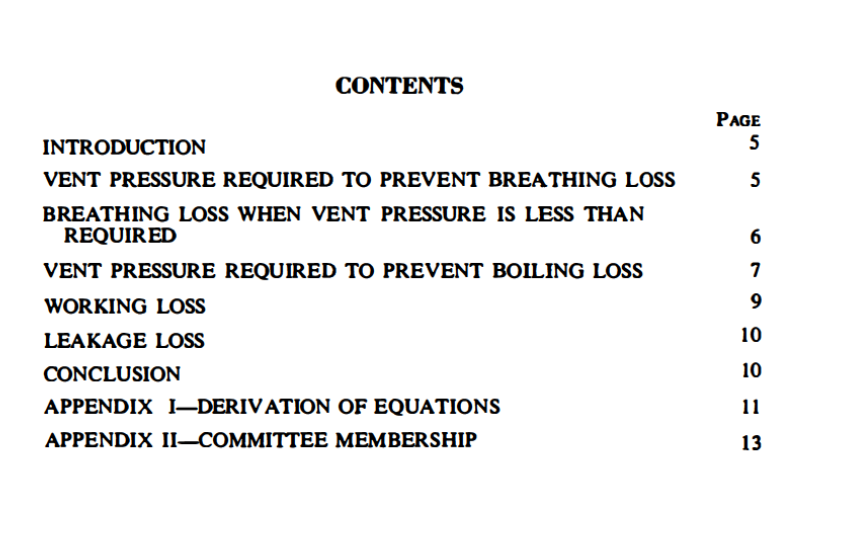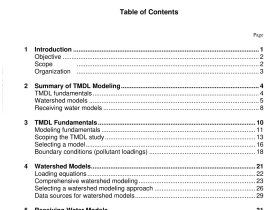API MPMS 19.1A pdf download

API MPMS 19.1A pdf download.Manual of Petroleum Measurement Standards Chapter 19—Evaporative Loss Measurement
When a product is stored in a tank having a higher pressure setting than required by Fig. 5, the working loss may be estimated for this condition by use of values obtained from Fig. 5 and Fig. 8. By deducting the pressure required, as determined from Fig. 5, from the actual vent setting, the balance, designated as oP, may then be considered to be the effective pressure available for reducing working loss as determined from Fig.8. Fig. 8 is based on equation (3a) except that P, is considered to be AP. The loss values are repre- sentative for normal turnovers (12 per year) experi- enced with low-pressure storage. The values do not apply forI low-pressure vessels which have rapid or frequent throughputs. Theoretically, stocks which may be stored in the absence of air ( minimum pv equals or exceeds P1+ Pa) should not incur working loss. 1 In practice, working loss does oCCur and depends upon the rate of flling, dissipation of heat, and vent pressure. Data are not available to determine the vent setting which would prevent working loss when air is absent.
The eficiency of a low-presure vessel is directly dependent on maintaining a vapor-tight vessel. Defec- tive operating equipment which allows vapors to escape at pressures below the vent setting results in an inefi- cient operating unit. Leakage loss is not subject to estimation by means of a correlation. Conclusion The loss correlations are based on theory and as- sumed conditions. In order to correlate the theoretically calculated results with actual service, it would be necessary to obtain test data under actual operating conditions.I Because of the limited use recently of low-pressure tanks for products having a Reid vapor pressure of less than 15 lb, a feld test program is not warranted. In the case of products having a Reid vapor pressure from 15 lb to 30 lb, data are needed for a wide range of pump-in rates and vessel sizes under summer conditions to establish the working pressure which will efectively prevent working loss.
Working loss wil1 occur during fUing if the pressure of the vapor space exceeds the vent setting and vapors are expelled. If the pressure at the start of flling is less than the pressure vent setting, the air-hydrocarbon mixture will be compressed during fUing. The hydro carbon condenses maintaining nearly a constant partial pressure. A .. certain fraction of .vapor space may be fUed with liquid before the vent opens, thus decreasing working Joss. As flling continues, the total pressure eventuaUy equals the pressure at which the relief valve opens, resulting in venting. Assuming there is no tem perature change in either the liquid or the vapor during the flling period, the remaining liquid entering the tank replaces an equal volume of vapors discharged from the vent. The total amount of Joss, therefre, depends on the capacity of the vapor space in the tank. Since the temperature normally does change as conden sation takes place, the rate of flling and emptying can also afect the amount of Joss. The unpredictable efect of these variables has made it difcult to determine the actual loss resulting from fUing low-pressure tanks. To obtain theoretical values for losses incurred dur ing flling, two assumptions have been made: 1. The vessel is completely flled, starting with a satu rated vapor space; i.e., equilibrium exists between the hydrocarbon content in the vapor and the liquid phases under given conditions of temperature and pressure. 2. Filling starts at slightly less than atmospheric pressure.









